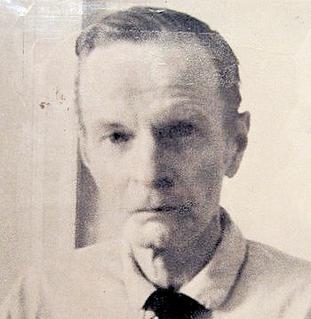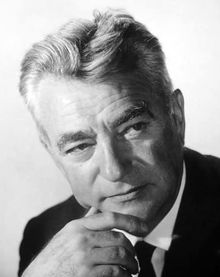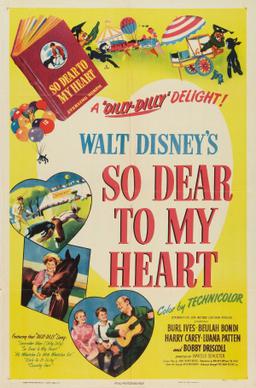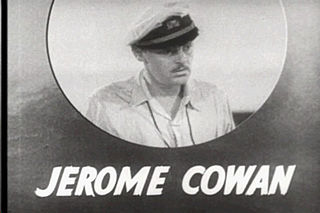
Cornell George Hopley Woolrich was an American novelist and short story writer. He sometimes used the pseudonyms William Irish and George Hopley.

Isadore "Dore" Schary was an American playwright, director, and producer for the stage and a prolific screenwriter and producer of motion pictures. He directed one feature film, Act One, the film biography of his friend, playwright and theatre director Moss Hart. He became head of production at Metro-Goldwyn-Mayer and replaced Louis B. Mayer as president of the studio in 1951.

Robert Cletus Driscoll was an American actor who performed on film and television from 1943 to 1960. He starred in some of the Walt Disney Studios' best-known live-action pictures of that period: Song of the South (1946), So Dear to My Heart (1949), and Treasure Island (1950), as well as RKO's The Window (1949). He served as the animation model and provided the voice for the title role in Peter Pan (1953). He received an Academy Juvenile Award for outstanding performances in So Dear to My Heart and The Window.

Charles Vidor was a Hungarian film director. Among his film successes are The Bridge (1929), Double Door (1934), The Tuttles of Tahiti (1942), The Desperadoes (1943), Cover Girl (1944), Together Again (1944), A Song to Remember (1945), Over 21 (1945), Gilda (1946), The Loves of Carmen (1948), Rhapsody (1954), Love Me or Leave Me (1955), The Swan (1956), The Joker Is Wild (1957), and A Farewell to Arms (1957).

The Spiral Staircase is a 1946 American psychological horror film directed by Robert Siodmak and starring Dorothy McGuire, George Brent, and Ethel Barrymore. Set over the course of one evening, the film follows a mute young woman in an early-20th century Vermont town who is stalked and terrorized in a rural mansion by a serial killer targeting women with disabilities. Kent Smith, Rhonda Fleming, Gordon Oliver and Elsa Lanchester appear in supporting roles. It was adapted for the screen by Mel Dinelli from the novel Some Must Watch (1933) by Ethel Lina White.

Jon Hall was an American film actor known for playing a variety of adventurous roles, as in 1937's The Hurricane, and later when contracted to Universal Pictures, including Invisible Agent and The Invisible Man's Revenge and six films he made with Maria Montez. He was also known to 1950s fans as the creator and star of the Ramar of the Jungle television series which ran from 1952 to 1954. Hall directed and starred in two 1960s sci-fi films in his later years, The Beach Girls and the Monster (1965) and The Navy vs. the Night Monsters (1966).

So Dear to My Heart is a 1948 American live-action/animated comedy-drama film produced by Walt Disney and released by RKO Radio Pictures. Its world premiere was in Chicago, Illinois, on November 29, 1948. Like 1946's Song of the South, the film combines animation and live action. It is based on the 1943 Sterling North book Midnight and Jeremiah. The book was revised by North to parallel the film's storyline amendments and then re-issued under the same title as the film.

Born to Kill is a 1947 RKO Pictures American film noir starring Lawrence Tierney, Claire Trevor and Walter Slezak with Esther Howard, Elisha Cook Jr., and Audrey Long in supporting roles. The film was director Robert Wise's first film noir production, preceding his later work on The Set-Up (1949) and The Captive City (1952).

Tom Conway was a British film, television, and radio actor. He is remembered for playing suave adventurer The Falcon in a series of 1940s films and psychiatrist Dr. Louis Judd in Cat People (1942) and The Seventh Victim (1943).

Jerome Palmer Cowan was an American stage, film, and television actor.

Chester Cooper Conklin was an early American film comedian who started at Keystone Studios as one of Mack Sennett’s Keystone Cops, often paired with Mack Swain. He appeared in a series of films with Mabel Normand and worked closely with Charlie Chaplin, both in silent and sound films.

Red Light is a 1949 American film noir crime film starring George Raft and Virginia Mayo, and directed and produced by Roy Del Ruth. Based on the story "This Guy Gideon" by Don "Red" Barry, it features strong religious overtones.
John Paxton was an American screenwriter.

Treasure Island is a 1950 adventure film produced by RKO-Walt Disney British Productions, adapted from Robert Louis Stevenson's 1883 novel of the same name. Directed by Byron Haskin, it stars Bobby Driscoll as Jim Hawkins and Robert Newton as Long John Silver. Treasure Island was Disney's first completely live-action film and the first screen version of Treasure Island made in color. It was filmed in the United Kingdom on location and at Denham Film Studios, Buckinghamshire.

Riff-Raff is a 1947 American film noir starring Pat O'Brien, Anne Jeffreys and Walter Slezak. It was directed by Ted Tetzlaff, who later directed The Window (1949) and worked as a cinematographer for over 100 films, including Alfred Hitchcock's Notorious (1946). The music was composed by Roy Webb and Joan Whitney.

Henry Levin was an American film director. He helmed over 50 feature films between 1944 and 1980, with his best known works including Jolson Sings Again (1949), Journey to the Center of the Earth (1959) and Where the Boys Are (1960).
Seton Ingersoll Miller was an American screenwriter and producer. During his career, he worked with film directors such as Howard Hawks and Michael Curtiz. Miller received two Oscar nominations and won once for Best Screenplay for the 1941 fantasy romantic comedy film, Here Comes Mr. Jordan, along with Sidney Buchman.

A Dangerous Profession is a 1949 American film noir directed by Ted Tetzlaff, written by Warren Duff and Martin Rackin, and starring George Raft, Ella Raines and Pat O'Brien. The film was one of a series of thrillers in which Raft appeared in the late 1940s, with decreasing commercial results.

Johnny Allegro is a 1949 American film noir directed by Ted Tetzlaff and starring George Raft. An ex-gangster (Raft), temporarily working as a federal agent, runs afoul of a counterfeiting crime lord (Macready) who enjoys hunting. It was one of several thrillers Raft made in the late 1940s.

Gambling House is a 1951 American film noir crime film directed by Ted Tetzlaff and starring Victor Mature, Terry Moore and William Bendix.


















